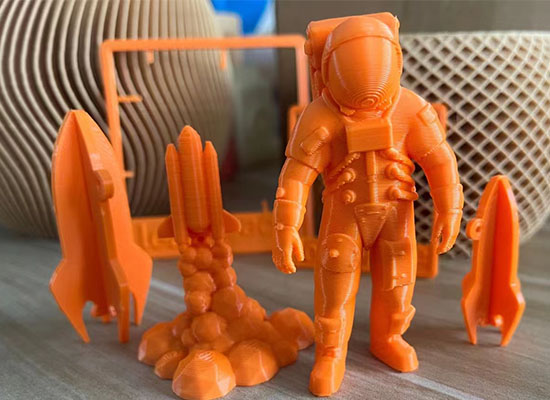


3D printing has revolutionized manufacturing in recent years and plastic is one of the most widely used materials in this process. Using computer-aided design (CAD) software, plastic 3D printing involves the layer-by-layer addition of melted plastic material to create a physical object. This process has significantly reduced production time and costs, making it a popular choice for rapid prototyping and small-scale production. In this comprehensive guide, we will cover all aspects of plastic 3D printing, including its history, types, materials, and applications
History of Plastic 3D Printing:
The first 3D printing technology, also known as additive manufacturing, was developed in the 1980s by Chuck Hull. He created the first 3D printer using a process called stereolithography, which used photopolymerization to create objects. Since then, plastic 3D printing technology has rapidly evolved and various methods have been developed for printing with different types of plastic materials.
Types of Plastic 3D Printing:
There are several different methods of 3D printing using plastic materials, each with its own advantages and limitations. The most commonly used methods include fused deposition modeling (FDM), stereolithography (SLA), selective laser sintering (SLS), and digital light processing (DLP).
Fused Deposition Modeling (FDM):
FDM is the most widely used plastic 3D printing method. It involves heating and extruding a plastic filament through a nozzle to create layers that form the object. FDM is known for its simplicity, cost-effectiveness, and versatility. It is commonly used for rapid prototyping, functional parts, and concept models.
Stereolithography (SLA):
SLA uses a vat of liquid photopolymer resin that is cured by light to form layers and create the desired object. The process involves a laser that traces the pattern of each layer onto the resin, hardening it into a solid form. This method is known for its high accuracy and smooth surface finish, making it suitable for detailed models and prototypes.
Selective Laser Sintering (SLS):
SLS uses a high-powered laser to sinter (or melt) powdered plastic material, layer by layer, to create an object. This method is commonly used for producing complex, functional parts with high strength and durability.
Digital Light Processing (DLP):
DLP is similar to SLA, but instead of a laser, it uses a digital light projector to cure the liquid resin. This method is faster than SLA and produces objects with a smooth surface finish, but may not have the same level of precision.
Materials Used in Plastic 3D Printing:
Plastic 3D printing materials come in various forms, such as filaments, pellets, or powder, depending on the printing method. Some common materials used for plastic 3D printing include ABS, PLA, nylon, polycarbonate, and PETG. Each material has its own unique properties, such as strength, flexibility, and heat resistance, making them suitable for different applications.
Applications of Plastic 3D Printing:
Plastic 3D printing has a wide range of applications in various industries, including automotive, aerospace, healthcare, and consumer goods. It is commonly used for prototyping, tooling, custom parts, and creating complex and intricate designs that are not possible with traditional manufacturing methods. Plastic 3D printing is also being used in the medical field for creating patient-specific medical devices and prosthetics.
Advantages and Limitations of Plastic 3D Printing:
Some advantages of plastic 3D printing include its ability to produce complex designs, reduce lead time and costs, and allow for the creation of customized products. However, some limitations to consider include limited material options, surface finish limitations, and the need for post-processing to improve the strength and durability of printed parts.
plastic 3D printing has revolutionized the manufacturing industry and has numerous applications in various fields. Its continuous evolution and development have made it a popular choice for rapid prototyping and small-scale production of functional and customized parts. As technology continues to advance, we can expect to see even more advancements in plastic 3D printing and its applications in the future.